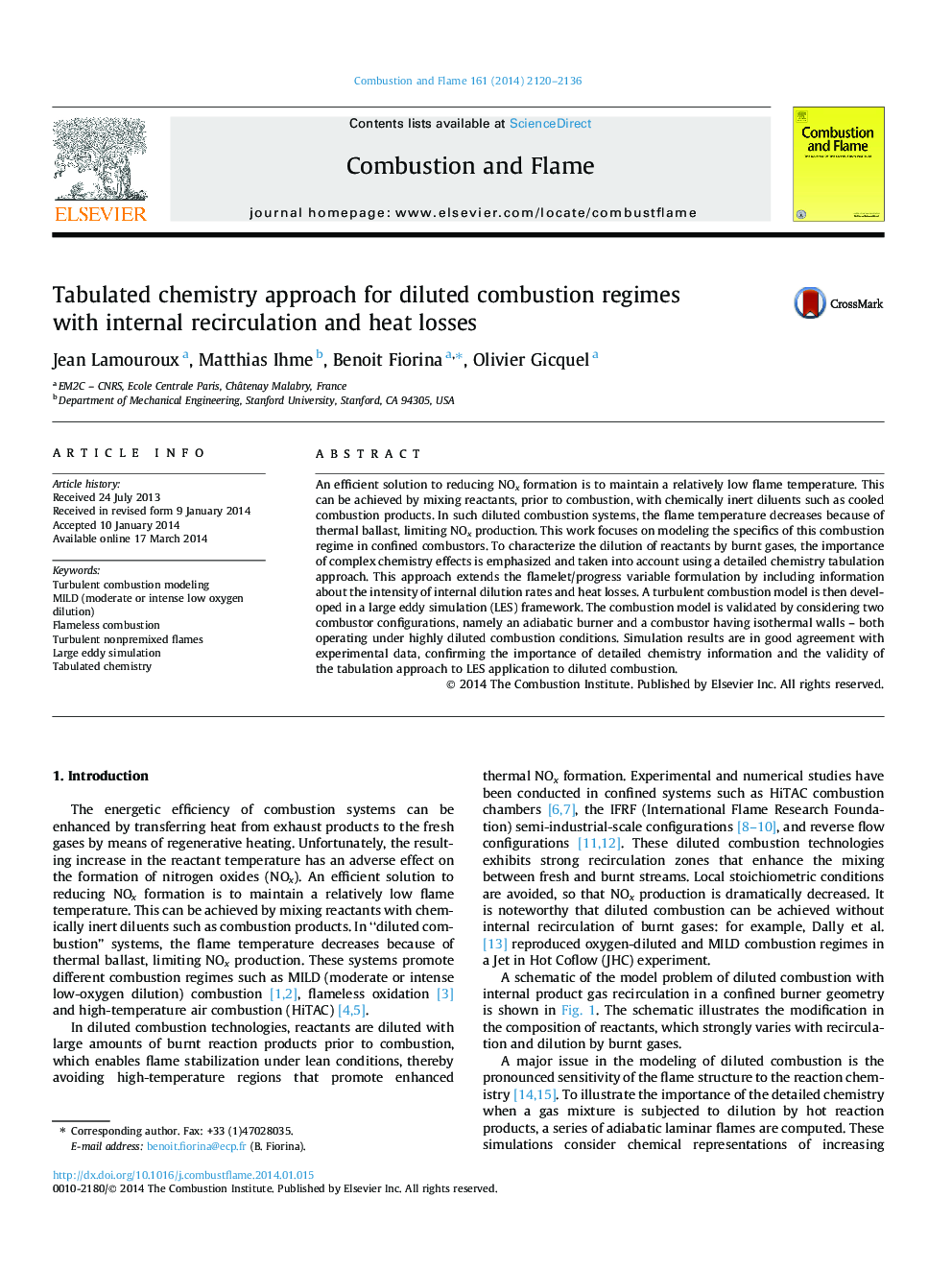| Article ID | Journal | Published Year | Pages | File Type |
|---|---|---|---|---|
| 166419 | Combustion and Flame | 2014 | 17 Pages |
An efficient solution to reducing NOx formation is to maintain a relatively low flame temperature. This can be achieved by mixing reactants, prior to combustion, with chemically inert diluents such as cooled combustion products. In such diluted combustion systems, the flame temperature decreases because of thermal ballast, limiting NOx production. This work focuses on modeling the specifics of this combustion regime in confined combustors. To characterize the dilution of reactants by burnt gases, the importance of complex chemistry effects is emphasized and taken into account using a detailed chemistry tabulation approach. This approach extends the flamelet/progress variable formulation by including information about the intensity of internal dilution rates and heat losses. A turbulent combustion model is then developed in a large eddy simulation (LES) framework. The combustion model is validated by considering two combustor configurations, namely an adiabatic burner and a combustor having isothermal walls – both operating under highly diluted combustion conditions. Simulation results are in good agreement with experimental data, confirming the importance of detailed chemistry information and the validity of the tabulation approach to LES application to diluted combustion.
